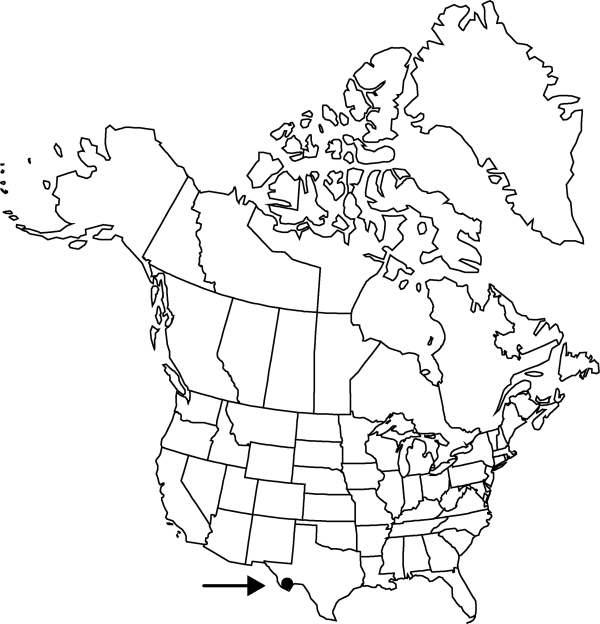Difference between revisions of "Anulocaulis eriosolenus"
Contr. U.S. Natl. Herb. 12: 375. 1909.
FNA>Volume Importer |
FNA>Volume Importer |
(No difference)
| |
Revision as of 20:01, 24 September 2019
Herbs, stout or slender, short-lived perennial or annual. Stems 0.2–1.8 m. Leaves: 2–3 pairs near base; petiole 2–7 cm; blade broadly ovate to almost round, 2–11 × 2–13 cm, base shallowly cordate to ± truncate, apex rounded or obtuse, adaxial surface yellow-green, abaxial surface much paler, both surfaces sparsely villous-hispid with blackish based hairs. Flowers usually borne singly on branchlets of inflorescence; perianth 8–9 mm, tube white to pink or pale lavender [magenta], finely pubescent, limbs white to pink or pale lavender [magenta], gradually flared from tube; stamens 5, exserted 4–6 mm. Fruits bluntly 5-angled, turbinate, 2.6–3.8 × 2.4–3.4 mm, sometimes secreting mucilage (especially southern populations) when wetted; ribs 10, faint, linear; equatorial flange or ridge absent. 2n = 24.
Phenology: Flowering late spring-mid fall.
Habitat: Sandy, gravelly limestone outwash fans, or calcareous silty soils, gypsum
Elevation: 600-1200 m
Distribution

Tex., Mexico (Chihuahua, Coahuila).
Discussion
The perianth tube of Anulocaulis eriosolenus elongates two to seven times its length after the limb of the perianth wilts.
Selected References
None.